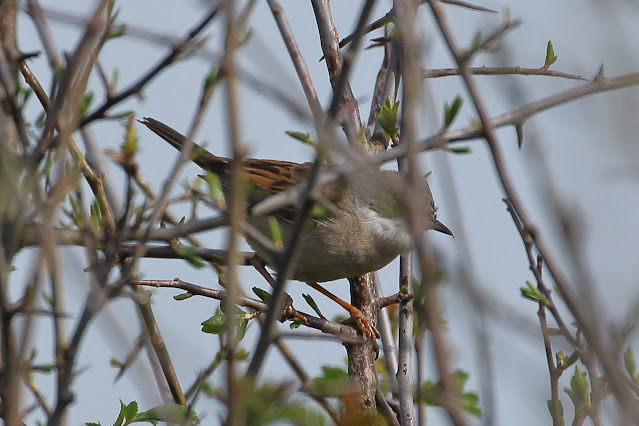17th April 2022 - within the last week, a number of summer-visiting bird species have arrived back in the Abingtons.
On 13th April, Brian and Pamela P reported the return of Swallow that regularly nest in their barn on the LSA. This first report of the year in the Abingtons is a week or two later than previous years - a finding consistent with the rest of southern England this year. The first reports of Swallow in the Abingtons over the past five years have all been between 2nd and 7th April, and it is likely that colder weather and adverse winds earlier in the month held them back this year.
On 17th April, along the Roman Road, Andy M spotted a number of both Common Whitethroat and Lesser Whitethroat, singing from the hedgerows near Worsted Lodge. The Common Whitethroat often sings from a perch high up in the foliage, showing off its white throat, grey head, chestnut wing feathers and pinky tinge to the breast. Whilst the Lesser Whitethroat also has a white throat and grey head, it has a darker grey patch behind the eye, dull grey-brown back and wings, and more often sings from deep within the thicket. The Common Whitethroat has a short, scratchy, fast song, whilst the Lesser Whitethroat has a short warble followed by a loud series of five notes.







No comments:
Post a Comment